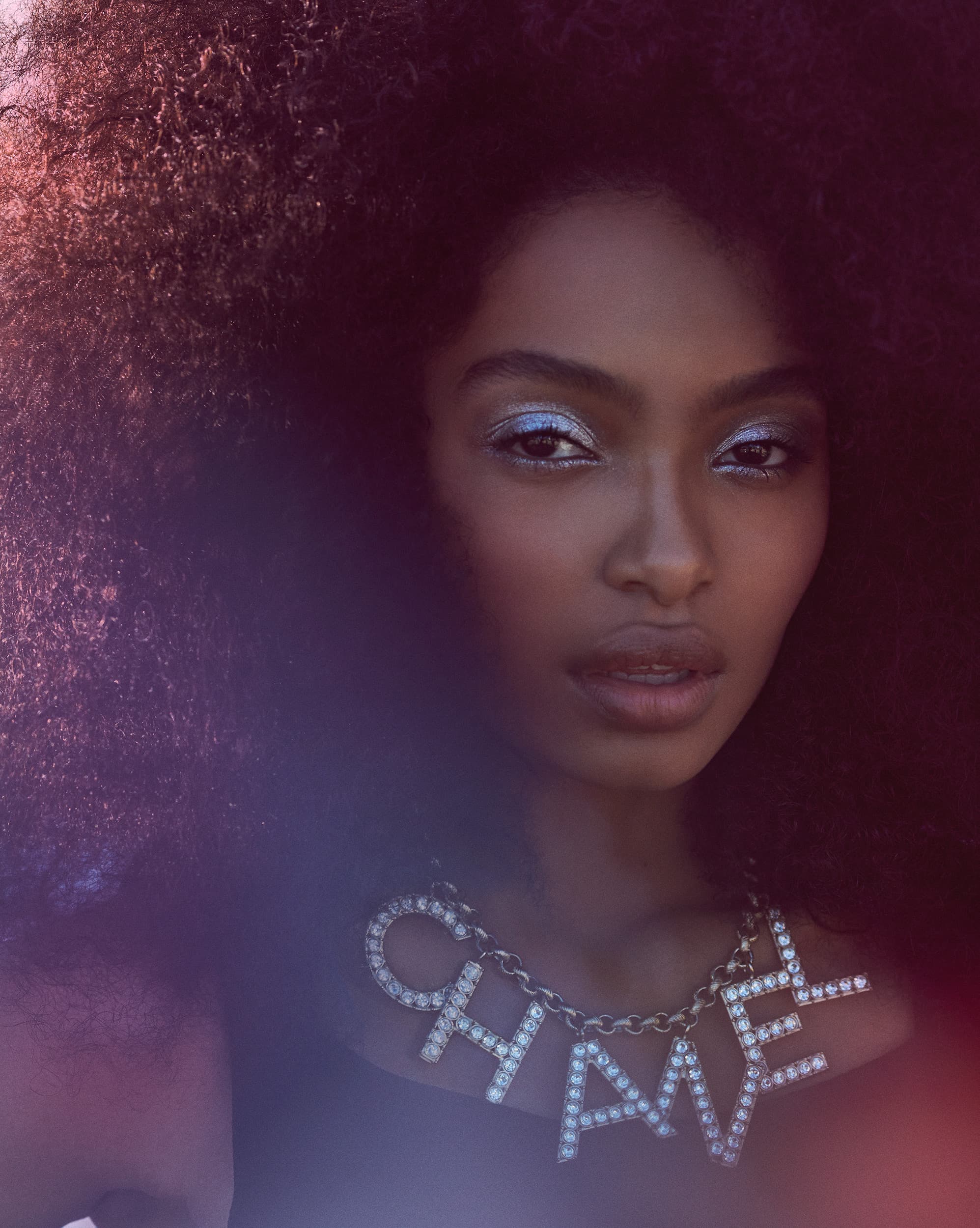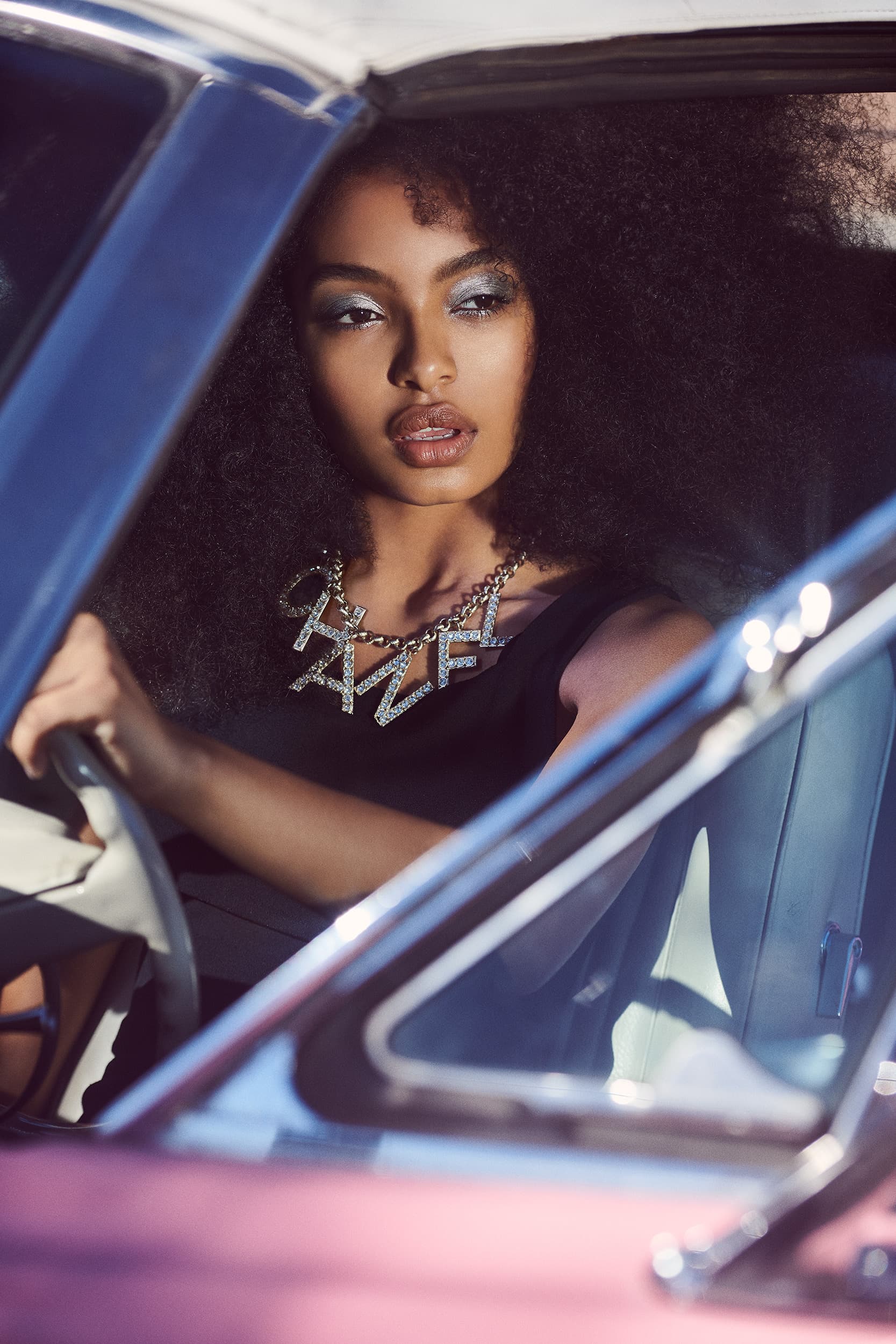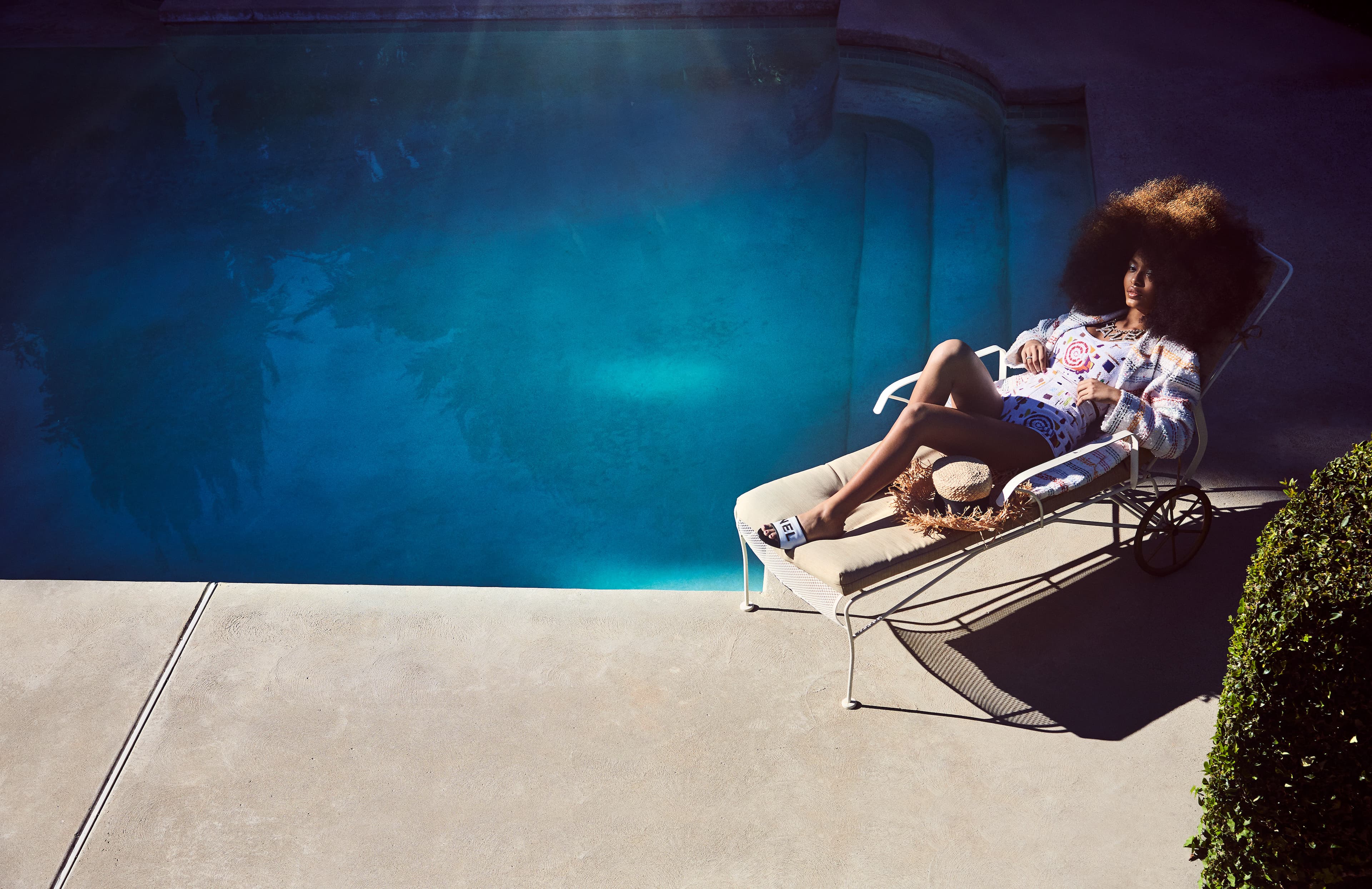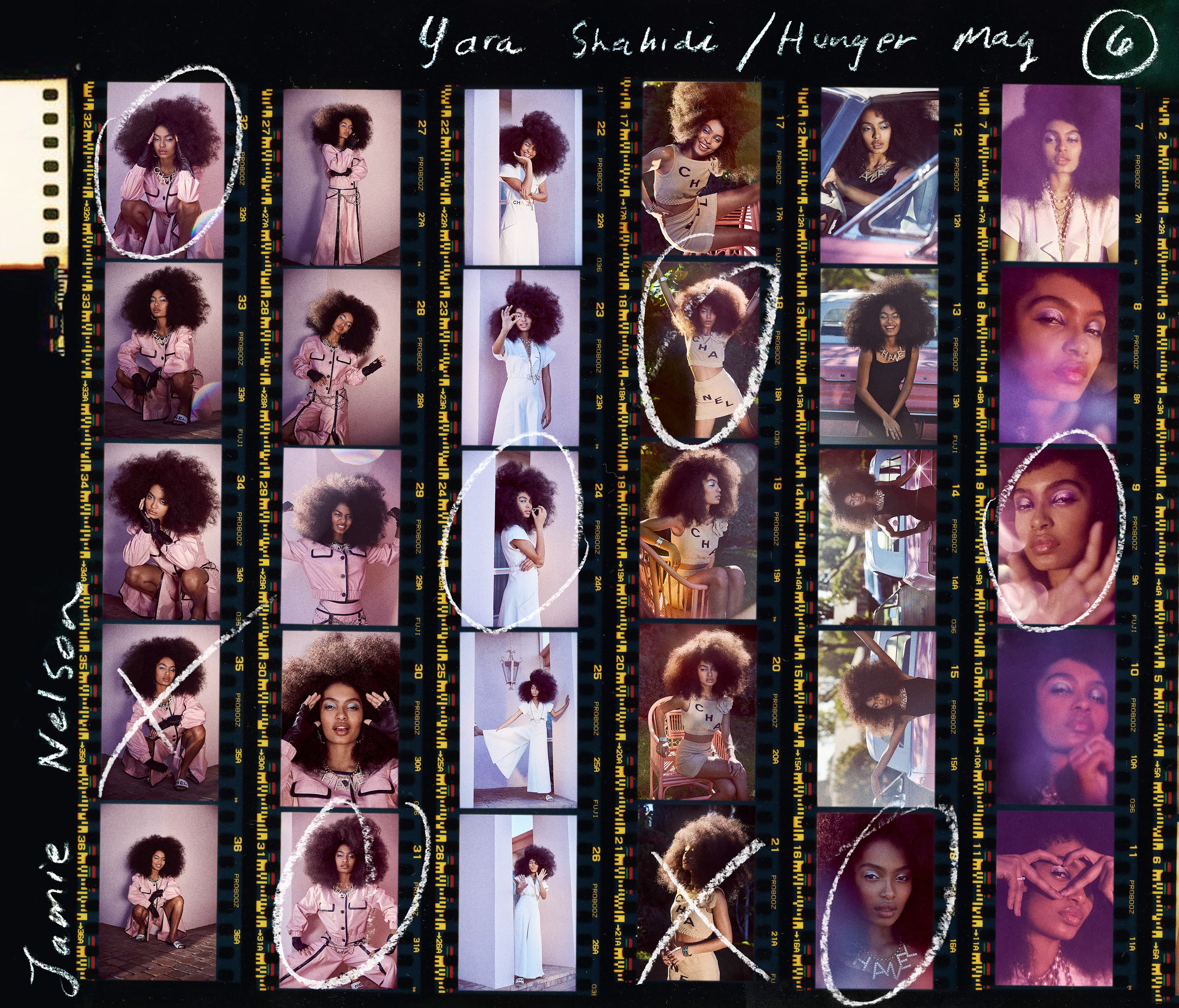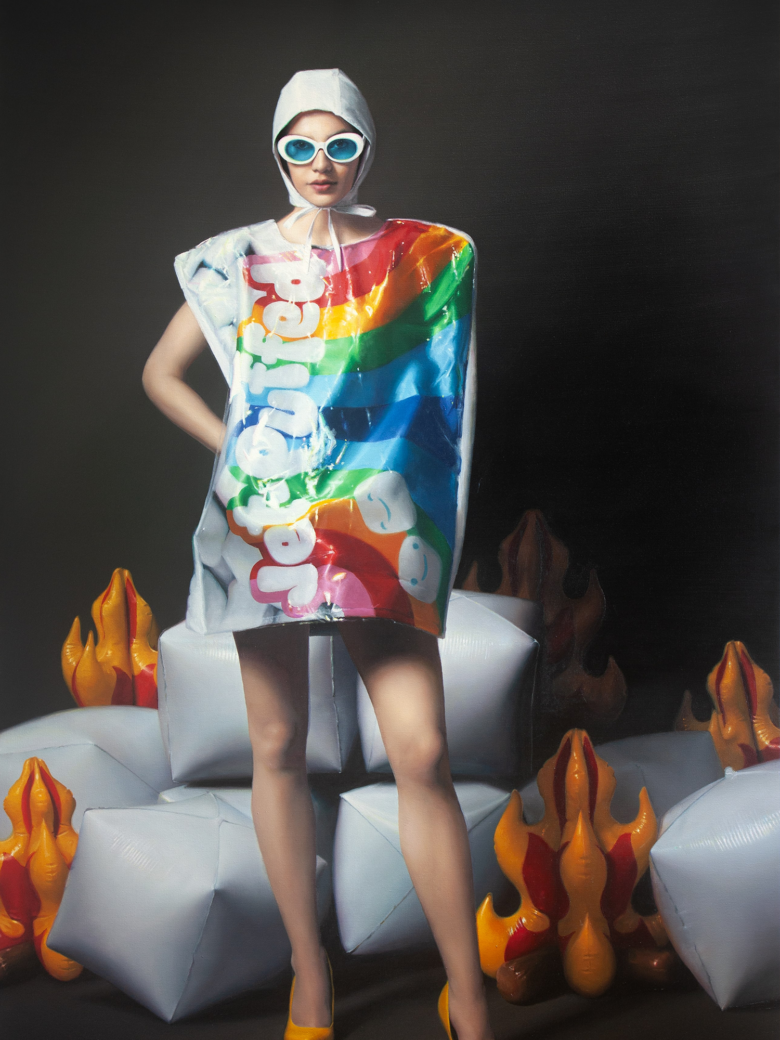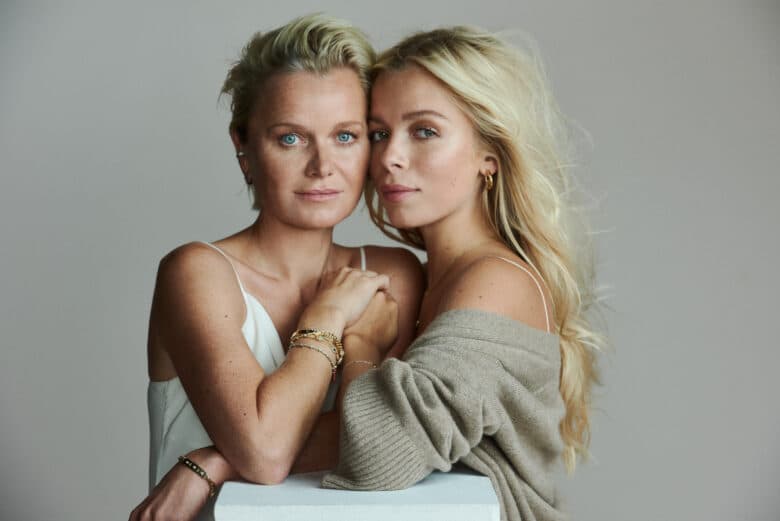Yara Shahidi on gender politics and what it means to be an intersectional artist in 2019
It’s a bright, smogless morning when I drive to Yara Shahidi’s home in a sleepy suburb of Los Angeles. Before ringing the doorbell, Yara’s publicist informs me that this is a “shoes off” kind of household. Yara opens the door, all smiles in her Saturday-morning adidas tracksuit. As I dutifully slide off my loafers, her mother Keri greets me with a warm handshake and a pair of white, disposable spa slippers. The one-size-fits-all slip-ons have an infantilising excess of heel on my feet, but immediately I feel like the clownish cosiness is breaking down the initial formality of our greeting.
I sit down at the dining room table in front of a fruit platter fit for a Flemish still life painting. Yara and Keri meander back and forth to the kitchen chatting about her absent little brothers (they’re on a ski trip), as they offer me tea and pastries from Urth Caffé. Yara mentions her youngest brother is turning 11 in March. “A Pisces!” I say reflexively before feeling a bit embarrassed about outing myself as a recreational astrologer. “Yeah!” says Yara, excitedly. “Me and the middle brother are Aquarius. Both my little brother and my close friend are March 7th. I know a lot of Pisces!” My self-consciousness is assuaged. Yara laughs, “Whenever somebody brings up Pisces, I change Nikes by Frank Ocean to Pisces. All I hear in my head is ‘These girls want Pisceeees!’” I notice she censors Ocean’s autotuned falsetto, “These bitches want Nikes”, and throughout our entire conversation I observe that Yara never utters a single profanity. Maybe this is because mama Keri is sitting beside her, but regardless, her manner of speech possesses an unfaltering maturity and panache. It’s rare to encounter an 18-year old who can hold an hour-long conversation without slipping in a single “like” or “um”. When I point this out mid-interview, her mother beams with pride. In case you were wondering, Keri is a Leo.
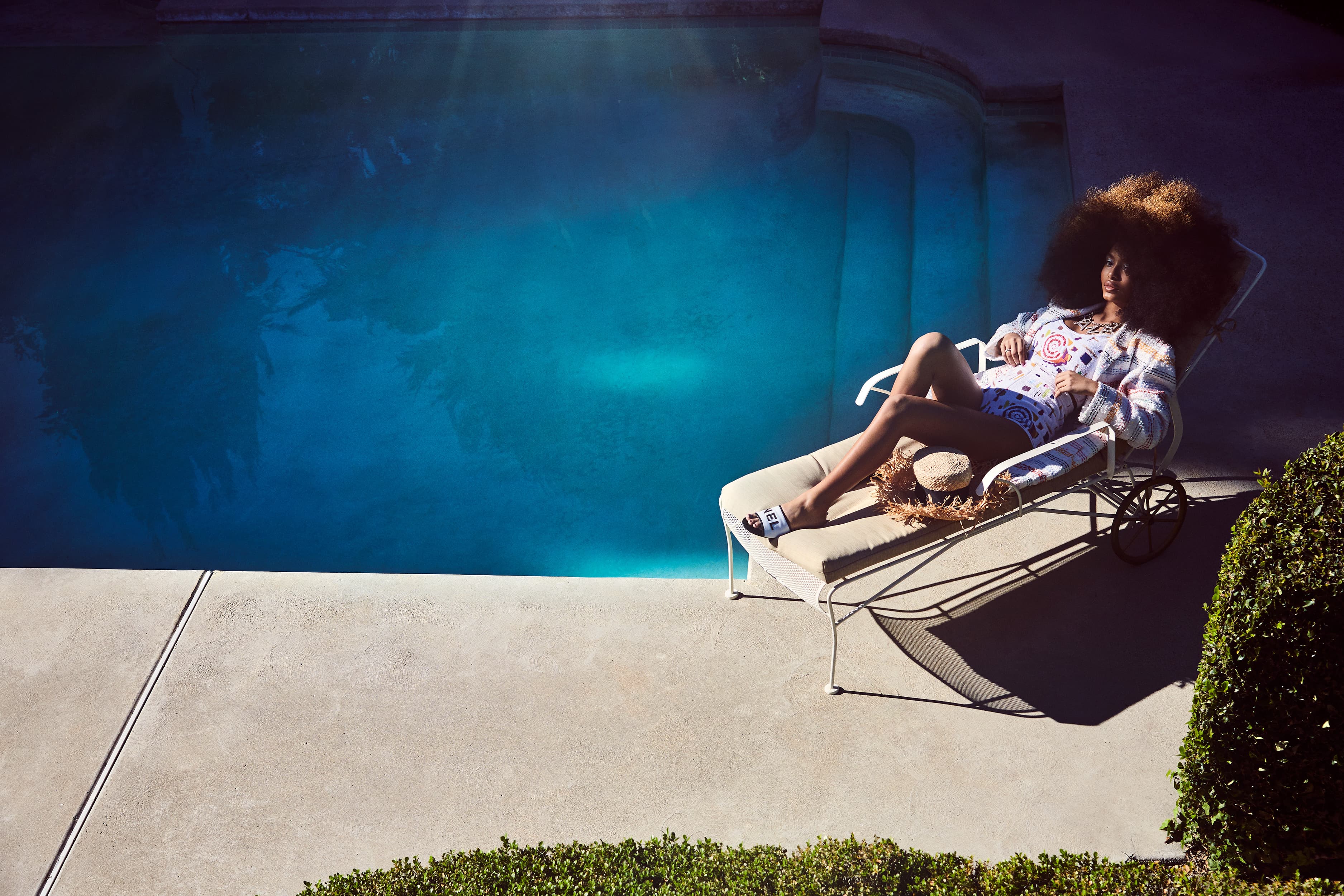
Between sips of a hearty English breakfast tea, Yara brings me up to speed about both her real-life and fictional college experiences. Coming off her first semester in college, she is balancing an Ivy league course-load while acting in her role as college sophomore, Zoey Johnson. Yara reprises her role as Zoey in the second season of ABC sitcom Grown-ish (a spin-off of Black-ish) – a comedically self-conscious examination of Gen Z, politics, social media, and all those learn-your-lesson-the-hard-way moments in college. Having myself graduated from Tufts in 2017, I mention that Kenya Barris (creator and producer of both Black-ish and Grown-ish) gave the commencement speech to my graduating class. Both Yara and Keri are impressed by this moment of kismet. “I remember when he was writing that speech!” Yara exclaims. “He was so nervous about it.” Delivered only four months after Trump’s inauguration, Barris’ speech was a comedic and uplifting respite from the spiritual devastation our campus faced in the wake of the election. He ended his speech saying, “If a C-student with a neck tattoo can be giving your commencement speech, and a six-time bankrupt, former steak-selling reality star can be President of the United States, then literally anything is possible.” Amen, Mr Barris.
While we’re on the subject of Trump, I might add that this interview is taking place on the 29th day of a record-breaking government shutdown over a border dispute, there is a teachers’ strike throughout Los Angeles county, and the third annual women’s march is taking place later this afternoon. Needless to say, Americans are frustrated. I remind Yara that in 2014, Trump tweeted, “How is ABC Television allowed to have a show entitled “Blackish”? Can you imagine the furore of a show, “Whiteish”! Racism at highest level?” Yara rolls her eyes. When I mention that Whiteish already exists—it’s called Friends or Fraiser or The Big Bang Theory, she concurs with a laugh. So, in addressing Trump’s tweet, I ask Yara: What makes Black-ish or Grown-ish valuable in the canon of modern television? She answers, “On Black-ish there are so many conversations about race, but because it’s coming in the form of laughter, the greater message is that race should be part of an everyday conversation.”

By transforming an ignorant character into a punchline instead of a villain, comedy enables us to address topics from the perspective of levity instead of lecture. Having played Zoey Johnson since she was 14, Yara has seen her character through various moments of ignorance and social blundering. “Zoey’s done a lot of growing up, and we’ve done a lot of growing up together. It’s interesting to play a character that is only a year older than me.” She elaborates, “I feel like Zoey is Switzerland, just really neutral.” She laughs affectionately. “Zoey’s had the privilege of not needing to have an opinion because her life hasn’t been at all big enough to force her to say, ‘This is what I believe in, because my life depends on this’.” She continues, “She may not be able to tell you what House Bill 2 is in North Carolina, but she can tell you why she believes in her friends having equal rights.” Although Yara is clearly much more assertive in her socio-political views than Zoey, I ask her if Zoey has taught her anything in the past four years. Yara mulls this over. “I first learned from Zoey pretty immediately that I could just use my ‘Zoey bravado’ when I was feeling unsure.” She adds, “I feel like Zoey’s taught me a lot about how to not be embarrassed. There are so many moments in Grown-ish where she could be very devastatingly embarrassed about what happens but she bounces back.”
Together, Zoey and Yara, display the vast spectrum of Gen Z political engagement. While Zoey changes the filter on her Facebook page in accordance with the cause-du-jour, Yara throws a voter registration party to celebrate her 18th birthday. So I ask Yara, in the age of “armchair activism”, what can young people do to enact progress? “I think what the past couple of years have really highlighted for me is just the importance of unity in this conversation.” She gives me an example, “Future [Janaya Khan], who is an amazing activist and co-founder of Black Lives Matter Canada, was saying, ‘When you advocate for equity for people other than yourself, that means you’re advocating for true equity. When you advocate for equity only for yourself, that means you just want colonial rules to benefit you. It’s a shift of privilege rather than a dissemination of it.’ I feel like that’s what community represents to me, just in its expansiveness, of caring for people other than yourself.”
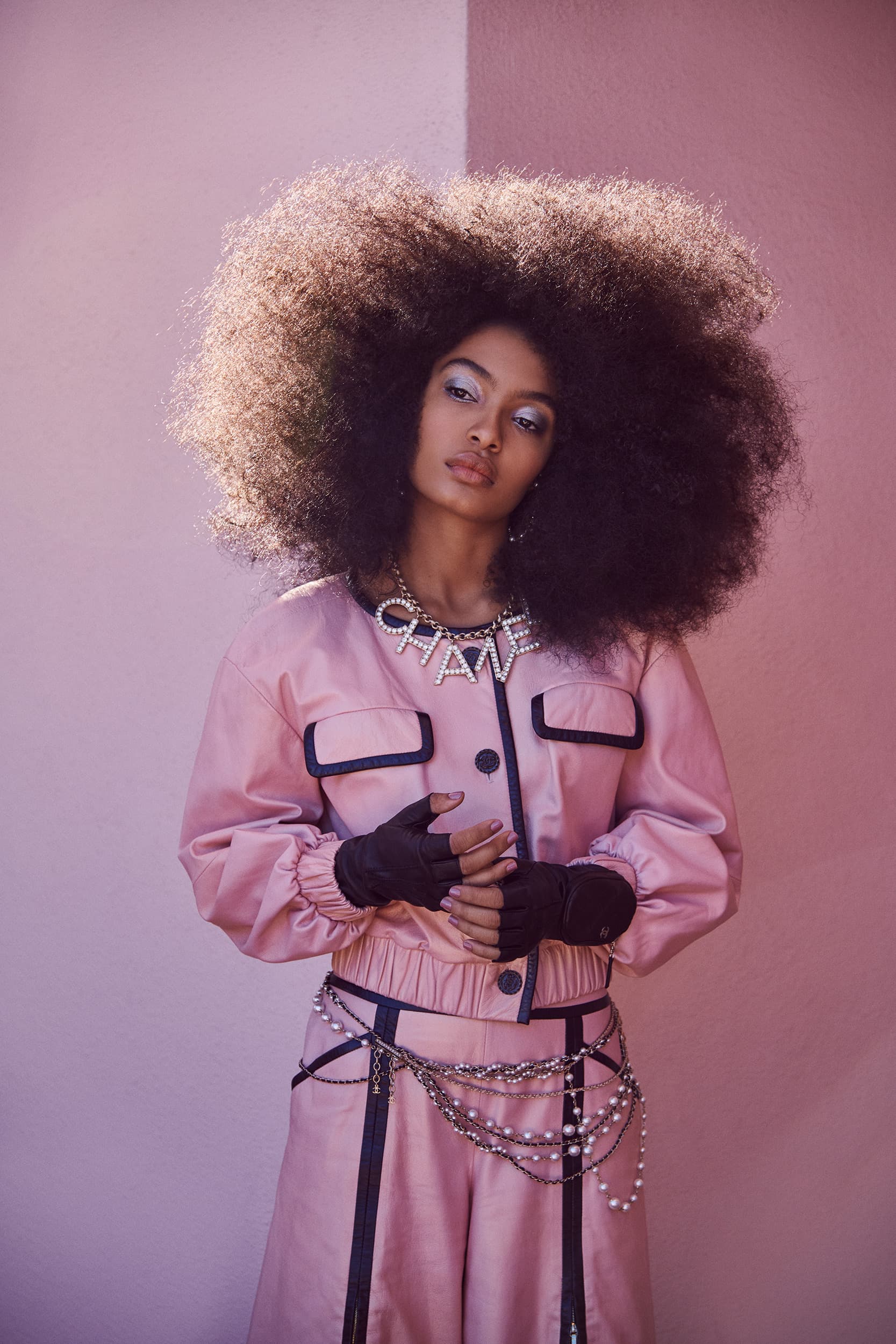
Yara tears open a croissant and asks her mother to pass the strawberry jam. Keri has been casually thumbing through a book while Yara waxes poetic on political engagement. I am reminded of the way my mother used to flip through magazines on the sidelines of my fourth grade ballet lessons – Yara’s mental gymnastics in the arena this interview is a performance Keri has seen many times before. As for myself, I’m still in awe of the unflinching alacrity of Yara’s thoughts.
I pivot the conversation to Yara’s upcoming film The Sun Is Also a Star based on the best-selling novel by Nicola Yoon. The story takes place within a single day, built upon the narrative framework of a love-at-first-sight encounter between Natasha (Shahidi) and Daniel (Charles Melton). Natasha is an undocumented Jamaican girl who, along with her family, is 24 hours away from being deported, while Daniel, the first-generation son of South Korean immigrants, is on his way to an interview at Yale University. When I ask Yara what drew her to the character of Natasha, she answers, “Knowing I’m coming from first-generation on one side of my family, and that currently they’re on the list of the travel ban, her story is very familiar. I gravitated towards the aspects of it in this story both on Daniel’s and Natasha’s side.” As both African-American and Iranian, Yara understood the humanity of Yoon’s story. She was also able to bring her own personal quirks to Natasha’s character. “I feel like all those aspects – even being overly cynical like Natasha – drew me to the project. She uses science, while I use history to make sense of anything presented to me.” To reiterate Yara’s passion for history, Keri mentions that she only just got Yara to begin reading fiction books.

On the subject of books, I ask Yara: If you could play any character in a book, who would it be? Yara, who is experiencing a seasonal allergy attack, stands up from the table, saying, “This is so nerve-wracking. Mommy do you have any ideas? I’m going to blow my nose just so I have time to think about it.” Keri says, “You’ve always talked about Holden Caulfield.” Between the trumpeting noises of nose-blowing, Yara’s voice echoes out of the hallway bathroom, “Oh! You know why Holden Caulfield though?” she asks. “If a young woman of colour can play Holden Caulfield, that’s the ultimate approval of like, we can just exist on TV finally!” Walking back to the table, more tissues in hand, she deconstructs Salinger’s cultural icon, “That book has no plot! Literally! I mean, I love the book, but even as a fan of it, you’re literally watching him complain and walk around the entire time. It’s a classic coming-of-age tale, but it speaks to the fact that we’re so familiar and attuned to care about him as a character, where I don’t think, at least right now, that you could get away with making him have any other identity on top of it in a way where they’re allowed to move around New York for a week.”
Together we have a tangential conversation about the way white men have the privilege of creating work that isn’t dissected in terms of identity. Like Holden Caulfield, they are allowed a plotless objectivity, uncomplicated by the consequences of history. I ask Yara if it’s frustrating to always be called upon to explain her work from the vantage point of “identity”. “Yes and no,” she answers. “I always wanted to be a history professor long before I wanted to be an actor. I think my interest in people and identity in the world has made this conversation really enjoyable, particularly in terms of how it melds with art.” She explores the flip side of the argument, “It’s a catch 22! It’s undeniable that how I manoeuvre is deeply affected by being black and Iranian. There isn’t any day in which I get up and just exist. But I think it would be nice if, as an intersectional artist, you were able to make that choice. If the choice was upon you rather than the external world to make art that makes a statement or make art that was just like, ‘You know what? Those colours look really pretty together!’”

I ask Yara, who has been interviewed countless times in the course of her young adult life, if there are any questions she’s always wished a journalist would ask. “Oh I don’t know! You guys have any thoughts?” she asks, turning again to her mother and publicist. “Can we brainstorm on this?” She looks at her publicist directly, “As somebody who goes through all the questions, what’s a good question?” I notice this is the second time Yara has phoned-a-friend in this interview. She can answer socio-political questions without hesitation, but when it comes to personal questions, she tends towards a second opinion. Her publicist addresses me, “Yara is so interesting and intelligent, but I want to just get back to those basics, like what do you like to eat?” Yara jumps at this response. “Yes! What’s my favorite colour!” Her publicist laughs, “I want fun! I want those fun questions!” After a few fun questions, these are a few fun facts I learned about Yara: Her favourite colour is yellow. Her favourite thing to eat is Persian food. She is obsessed with Frank Ocean and James Baldwin. She loves gardening with her father. She listens to so much music on set that her castmates call her ‘jukebox.’ Also, she just made a playlist on Spotify that she’s really proud of.
A quick google search of Yara Shahidi will show dozens of headlines championing her as “The Voice of Gen Z”, “Our Future President”, “The Face of Young Hollywood”, “Role Model”, “Style Icon”, and so on. She has interviewed Hillary Clinton. Oprah is one of her biggest fans. She is a brand ambassador for Chanel. Her Instagram has accrued over 3 million followers. So I have to ask her: does that ever start to feel like a lot of pressure? She gracefully disagrees. “It’s not externally imposed pressure, but I’m a perfectionist myself. Since I was little, I’ve always been… I don’t know the word…” “Focused?” Keri says. Yara smiles, “Very focused.” She continues, “There’s a lot that I want to achieve. So it’s less of the external pressure, whether it’s being on a show or having all these opportunities, and more that there’s still so much I want to accomplish. But that’s a fun pressure!”
As she answers this question, I realise I’ve made a big mistake. I made the assumption that the platform she’s amassed was a mere coincidence of celebrity. An inevitable byproduct of being a beautiful teenage actress with enviable eyebrows. I was wrong; this manifestation of her image was engineered with intention. As an 18-year old with “a lot she wants to accomplish”, this platform is both an achievement and a tool. One she wields with precision, weaponising her voice – that same voice we’ve elected to speak for a generation.
Yara Shahidi is the cover star for HUNGER issue 16, Speak Your Truth, out now. See the full shoot below.
